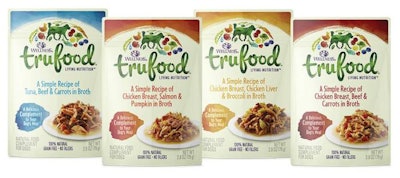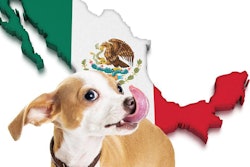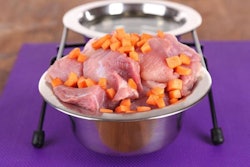
New pet food data from GfK on the US pet specialty retail channel shows pet food packages are shrinking. And, with apologies to the hit movie from 1989 (“Honey, I Shrunk the Kids”), it’s worth looking into possible reasons behind this shift.
During a webinar in late October 2016, “Emerging pet food specialty retail trends to watch,” Maria Lange, business group director of GfK, showed data indicating that the trend toward smaller pet food packages is especially noticeable in wet food, where trays and pouches – more common in markets like Europe – are starting to gain ground in the US. In terms of sales, wet pet foods in traditional cans or tins still predominate, at 82 percent for dog food and 92 percent for cat food, but those shares are declining as the newer formats score with consumers, thanks to their convenience and serving sizes more attuned to today’s pets.
With dogs, that means a move toward small and toy breeds, with dog food sales following suit. Since 2011, Lange said, sales of products tailored to small dogs have increased more than 73 percent, and the number of products has risen from about 500 in 2011 to 939 to date in 2016.
While dog food comprises the majority of pet food products and sales in the US, pet food manufacturers have been devoting more product development resources to cats, evident in the number of new cat food products launched at pet trade shows in 2016. This is perhaps at least partially due to a reported gravitation among millennials – now the largest demographic of pet owners – toward cat ownership. And as is the case with products for small dogs, many of the new cat food products are wet foods packaged in convenient, single-serving tray and pouches.
In 2012, only 8 percent of new wet dog foods and 6 percent of new wet cat foods were in trays or pouches, Lange said; now those figures are 20 percent and 26 percent, respectively, year to date. Sales of products in trays have increased 47 percent year over year, with pouches showing 23 percent growth. The newer formats are also more attractive to pet retailers, Lange added, because they take up less shelf space.
This trend is not limited to US pet specialty retail; a report in early 2015 by Food Safety Magazine on the overall US pet food packaging market forecasted pouches to rise 8.3 percent per year through 2018, compared to only 2.7 percent growth for cans annually.
Less is more: alternative pet foods, treats and dry pet foods
Another reason for the trend toward containers like trays and pouches, along with smaller package sizes, is the growing popularity of alternative formats in pet food, such as freeze-dried, dehydrated, frozen and mixers/toppers. These products are typically higher in density and, thus, can fit in smaller containers and packages, Lange pointed out. Though they still own only small shares of the US pet food specialty market, they are the fastest rising segments, with robust, double-digit growth rates year over year: 45.5 percent for freeze-dried, 37.1 percent for dehydrated, 26.9 percent for frozen, and 31.1 percent for mixers and toppers.
It’s not just these types of products and wet foods exhibiting smaller packages. During the webinar, Lange presented US pet specialty data indicating that pet treat packages smaller than 16 ounces have experienced continued growth since 2012 in both sales and units, while larger treat packages have noticeably declined.
After the webinar, Lange generously shared data on dry pet food packages with me, and the “less is more” phenomenon shows up here, too. In dog food, the change is not as significant: the shares of small and medium bags have slowly risen since 2011, with small bags going from 8.5 percent in poundage volume to 9.3 percent to date this year and medium ones from 12.2 percent to 14.6 percent. Meanwhile, large bags have grown considerably (sorry for the pun), from 13.2 percent in 2011 to 25.8 percent in 2016. On the other hand, extra-large bags have shrunk significantly – well, their market share has, from 66.1 percent to 50.3 percent the last five years.
Dry cat food shows more striking changes for small bags, with their share in terms of poundage volume growing from 14.6 percent in 2011 to 19.3 percent to date. At the same time, shares of medium and large bags have slightly declined, from 28.1 percent to 27.9 percent and 49.9 percent to 28.7 percent, respectively. While extra-large bags have never had much presence in dry cat food, for obvious reasons, their share has also declined, from 7.4 percent in 2011 to 4.1 percent in 2016.
Some pet food manufacturers may be reducing package sizes for their products as a cost-saving measure, but it’s clear that changing market forces and consumer needs are playing crucial roles, too.
















